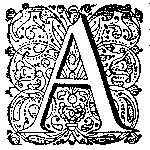‘From reading to painting’: Authors and Audiences of Dutch Recipes for Preparatory Layers for Oil Painting
DOI:
https://doi.org/10.18352/emlc.3Keywords:
historical recipes, painting grounds, historical source research, paint materials, ground colour, historiographyAbstract
Historical recipes have been used as sources of information on artists’ materials and methods since the nineteenth century, first in the field of art history, more recently also in conservation studies and the history of science. The reliability of recipes as historical sources remains an important issue. This paper examines the relationship between recipes for preparatory layers for oil painting and artistic practice by investigating the authors, their intentions and the recipes themselves. Preparatory layers or grounds are applied to prepare a support (e.g. canvas, panel, copper) for painting. Their influence on the visual characteristics of paintings and their stability with age makes preparatory systems an important topic in art technological studies. Ground recipes were written by artists, amateurs and lexicographers, for artists, amateurs and the general audience. Dutch writers had strong international connections, evidenced by translations, re-workings, references to earlier foreign sources, and by the export of their recipes. Comparison between ground recipes and actual grounds in paintings shows similarities in ground layering and colour, but also demonstrates that recipes may be repeated long after artists have abandoned the ground types described.
Downloads

Published
Issue
Section
License
Copyright (c) 2017 Maartje Stols-Witlox

This work is licensed under a Creative Commons Attribution-NonCommercial 4.0 International License.





